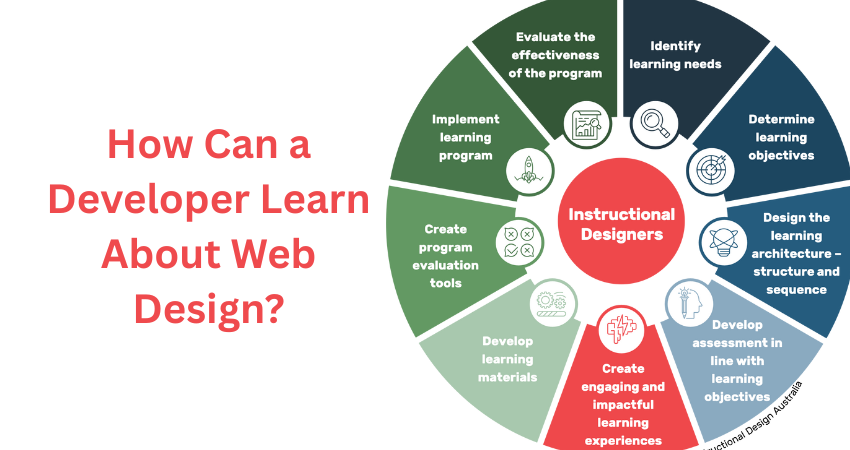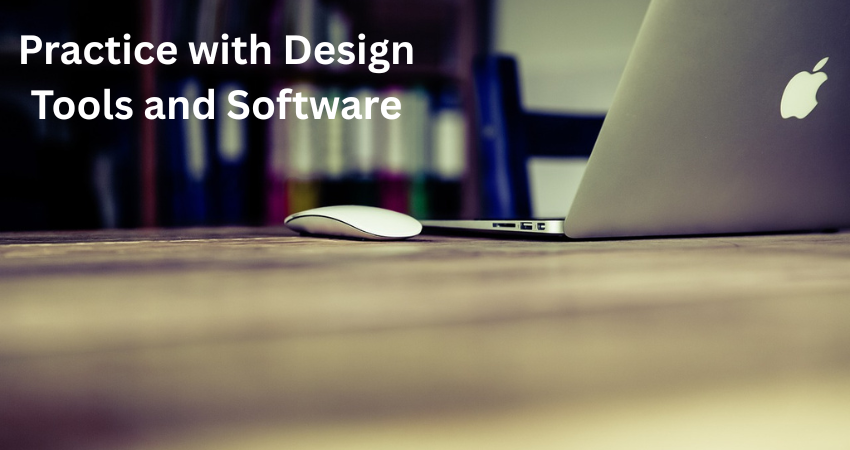
A web designer skill is important for every developer, who aspired to make their site not just working well but also appear professional and offer great experience to the users. While development deal with structure and functionality, design deals with the layout, color, typography, and usability. Hence, learning web design might help the developer create a path between aesthetics and code, subsequently leading to the efficiency of digital products in terms of offering. So, how should a developer start?
Understand the Difference Between Design and Development
As the first step into web design, understand clearly what sets apart design from development. Web development usually entails backend and frontend coding, and logic, functionality, and overhead performance. In contrast, design refers to user experience, aesthetics, layout, color harmony, and visual communication. For a developer, bridging this chasm can be way transformative. It allows a developer to write highly effective and functional sites as well as intuitive and beautiful ones by going all the way to the visual communication side.
More than showing the difference between these two junctures, this difference lays a solid foundation for learning. It gets developers from thinking in terms of structure alone to including visual storytelling and usability in their designs. Many of them tend to underestimate the fact that good design will retain or guide users. But they have come to realize that design sells. It eventually sets the ground for real-world collaboration ways between designers and developers.
Explore Real-World Design Projects and Resources
For developers, the best approach to learning web design is to look at existing works. By investigating currently implemented websites, especially from niche markets or distant areas like website design Cardiff UK, it helps to give layout, responsiveness, and branding patterns to developers. For instance, one may observe that a lot of websites in the UK give great importance to accessibility and clarity, which are best practices in line with SEO and UX design.
To disassemble websites and reverse-engineer their design decisions: Why did they put this button here? Why this color scheme? What is it about this navigation bar that makes it so useful for the user? Answering these questions shapes a developer’s design intuition.
There are also free tools like Chrome Dev Tools that allow developers to easily inspect and dissect these elements. Dribbble, Behance, and Awwwards feature portfolios presenting the world’s best web designs. These bring about an ongoing stream of inspiration to keep a developer in touch with changing visual trends. Structured learning would entail sites such as Coursera, free Code Camp, as well as YouTube channels like The Net Ninja, which provide curated lessons on web design fundamentals.
Learn Core Design Principles
No number of tools and tutorials can replace a solid understanding of design principles. These design core principles are common to all good designs-they have to do with web, print or motion graphics: contrast, balance, hierarchy, alignment, repetition, proximity, and space. By learning these principles, the developer’s mind changes about how he should code those elements, how these elements should structure layout, and how these elements should think about typography as well.
For example, contrast and hierarchy serve as most important principles among defining that a webpage is conceivably a headline or is it a call-to-action button, and, thus, he could pay more attention to the most relevant portions of the contents designated. A well-informed developer in these principles could build sites with more engagement and purpose. Alignment and proximity guide how clean and easy it is to follow a design.
These principles are easy to learn. Readily available and easy explanation includes resources like “The Non-Designer s Design Book” by Robin Williams. The best way to put that knowledge in motion is through small projects: maybe redesign your portfolio or make a couple of mock landing pages. It would ultimately become second nature, and with time would easily improve the visual quality of your projects.
Practice with Design Tools and Software

Once you know the basics, it is time to play around with hands-on tools. Figma, Adobe XD, and Sketch are increasingly being used for wireframes and UI design. Figma is especially browser-based, free, and great for collaborative design work as all these tools are developer-friendly while providing features like an easy-to-use interface, grid systems, and prototyping.
So, replicate existing web designs at first to understand layout grids, spacing, and then try creating your own wireframes/high-fidelity mockups, with time developing a better sense of spacing, alignment, typography choices and, most importantly, the understanding of how the designs are structured files to code them more accurately.
Another is that they help develop that kind of empathy towards the professional with real tools. It helps developers realize how difficult it is to prepare assets, space elements, and achieve a kind of visual balance. And we might find better communications in the team and smoother cycles of project delivery because of that.
Work on Projects and Seek Feedback
Web design shows that the world works with it and should be applied in real-life contexts. Consider some small design tasks at first: maybe redesign your personal website or perhaps build a mock-up for a business? There are quite a few challenges across web design platforms, such as Frontend Mentor. Each project can serve as a sandbox to play with new design techniques, tools, and concepts.
More important, get feedback. Subreddits like r/web_design and dedicated design Discord servers provide communities within which to receive critique for your work. Share your design with non-designers: some friends or colleagues will do just fine to see whether they find the UI truly engaging or totally confusing.
Feedback matters since it helps put you into the shoes of your consumers and gives you perspectives you may have missed. Afterward, with enough time gathering these critiques and applying them, you develop a great eye for design. You will also gain the ability to justify your design decisions with strong, logical arguments, a skill that is crucial for real-client projects. Thus, coupling hours of work with feedback will probably enhance your web design skills sooner than you expect.
Conclusion
Web design is a process worth discovering for a developer. It begins with determining the contrast between development and design, followed by some real-world examples, some major principles, mastering tools, and creating those projects. Theoretical involvement and adoption of practice make design that part of your skill set.
It boosts your worth as a professional and makes you a more understanding fellow in collaboration with many disciplines because you know how to design beautiful, user-friendly websites. So take that first step and start exploring, start practicing, and start designing.